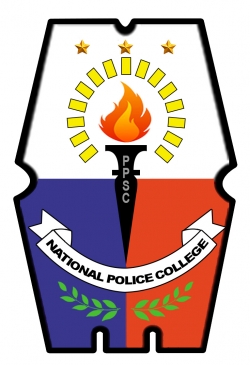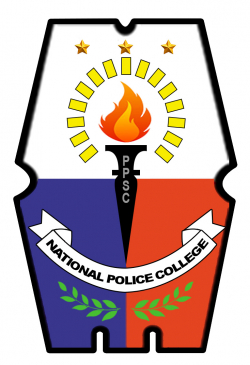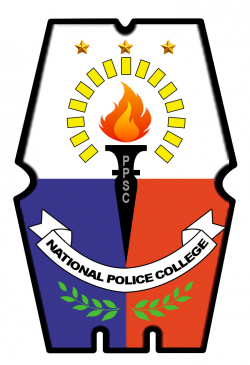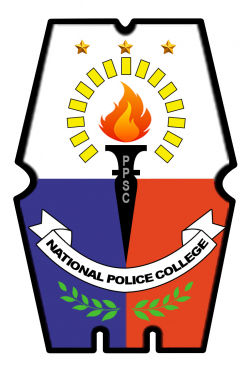IMPLEMENTATION STATUS OF THE LOCAL PEACE ENGAGEMENT CLUSTER OF NATIONAL TASK FORCE – END LOCAL COMMUNIST ARMED CONFLICT IN THE PROVINCE OF SORSOGON FOR THE YEAR 2019 RO 2022
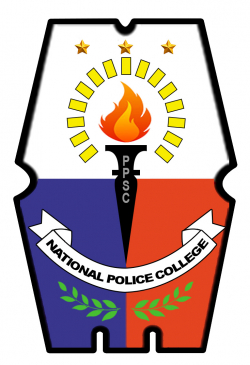
Type
Thesis
Authors
PLTCOL JAYSON REY C COLICO ( PLTCOL SALVADOR L ORTANEZ JR PLTCOL FERMIN P PISANDO )
Category
PSOSEC
[ Browse Items ]
Publication Year
2024
Tags
Abstract
The goal of the United Nations to prevent disputes from escalating into war that is why in its Charter it emphasized the four pillars where peace and security stands as one of them. As Martin Luther King Jr. said, “True peace is not merely the absence of ware, it is the presence of justice”. Global and local efforts are being exerted to foster justice and forge a more peaceful and secure future for ourselves and generations to follow.
Peace and security of a place is threatened by the vulnerabilities to different types of insurgencies that pose to the state with its internationalization and threat to the government legitimacy by recruiting people fin the neglected areas of the countryside. Different governments delve into complex challenges and crucial strategies for maintaining stability in the interconnected world, both on the global stage and in the local communities.
The Philippine government has ventured into various measures to counteract terrorists’ activities by the CPP-NPA-NDF spread in different parts of the country such as Central and Western Mindanao and even I the Bicol Region. In order to end conflicts in the country Executive Order No. 70 was issued synchronizing the governments’ instrumentality of power with the capabilities of private sector stakeholders to end 50 years of deceit, lies and atrocities committed by communist terrorists against Filipino people. The EO also created the National Task Force to End Local Communist Armed Conflict (NTF-ELCAC) aimed to defeat the local communist terrorist group and obtaining sustainable and inclusive peace throughout the Philippines. (ntfelcac.org). Hence, this study on the status of implementation of this Executive Order in the Bicol Region specifically in the province of Sorsogon from 2019-2022.
The study aims to primarily to determine the status of implementation of the Local Peace Engagement (LPE) Cluster of the National Task Force – End Local Communist Armed Conflict (NTF-ELCAC) by evaluating how the Province of Sorsogon provides the necessary support during the conduct of LPE in the target areas starting with the pre-determined Barangays identified as priority.
Specifically, it intends to answer the following sub-problems:
1. What is status of implementation of the local Peace Engagement (LPE) cluster of National task Force End Local Communist Armed Conflict (NTF-ELCAC) in the municipalities of Bulan, Magallanes, Juban, Pilar and Donsol, province of Sorsogon along: a) Community Consultations and Problem-Solving Sessions and b) Local Peace Dialogues with the Communist Terrorist Group (CTG)?
2. What are the challenges encountered during the implementation?
3. What possible recommendations can be proposed to enhance the implementation of the program according to the challenges and gaps encountered.
Based on the findings the following conclusions were drawn: 1. The implementation status of the LPE cluster, NTF-ELCAC along: Community Consultations and Problem-Solving Sessions and Local Peace Dialogue with the Communist Terrorist Group (CTG) is in the “Advance Level” in almost all of the indicators identified. They have positive results. 2) The respondents met various challenges in the implementation of the LPE Cluster NTF – ELCAC along: Community Consultations and Problem-Solving Sessions and Local Peace Dialogue with the Communist Terrorist Group (CTG) in varying degrees as shown in the rank of the different indicators. There were indicators that were ranked high as major challenges while the rest are minor challenges. 3) The recommendations forwarded depended on the office or personnel concerned depending on their specialization of tasks as described in the activities undertaken such as the NTF – ELCAC, the Regional and Provincial ELCAC, Local Government Units, Commission on Higher Education, Department of Education, Government Agencies and Non-Government Organizations. 4.) A Three-Year End-Insurgency Development Plan can be prepared based on the challenges and recommendations found in this study.
Based on the conclusions formulated the following are the recommendations: 1) Implement all the indicators in the Community Consultations and Problem-Solving Sessions and Local Peace Dialogue with the Communist Terrorist Group (CTG) in the respective barangays and make the necessary adjustments depending on the environmental (physical, political socio-economic and moral) conditions of the adopting barangay. 2) Re-validate the indicators for the challenges in the respective barangays if it will reveal the same results. If not, consult the Barangay Community Peace and Order Council (BPOC) or any representative from the Provincial Task Force – ELCAC. 3) Organize the Barangay Task Force to implement the National ELCAC Plan in the Barangay Level. 4) Implement the provisions of the Approved MC2024-006 Revitalized Pulis sa Barangay 5) Conduct a session and study the Three-Year End-Insurgency Development Plan for possible adoption by the barangay. Adopt the recommended strategies appropriate to the respective barangays.
The THREE-YEAR END-ISURGENCY DEVELOPEMNT PLAN (2025-2027) outlines a comprehensive strategy to address the root causes of insurgency and create a lasting peace in affected areas. The plan is based on a human-centered approach that prioritizes the well-being of local communities and their active participation in the peace process. It includes in the text the action plan with the following parts; Goals and Outcomes, Theories of Change, Strategic Implementation Framework, Innovation and Sustainability. Monitoring and Evaluation, Detailed Implementation Plan, and Output Recommendations. The plan should be sustainable, ensuring that the benefits of development are long-lasting.
Peace and security of a place is threatened by the vulnerabilities to different types of insurgencies that pose to the state with its internationalization and threat to the government legitimacy by recruiting people fin the neglected areas of the countryside. Different governments delve into complex challenges and crucial strategies for maintaining stability in the interconnected world, both on the global stage and in the local communities.
The Philippine government has ventured into various measures to counteract terrorists’ activities by the CPP-NPA-NDF spread in different parts of the country such as Central and Western Mindanao and even I the Bicol Region. In order to end conflicts in the country Executive Order No. 70 was issued synchronizing the governments’ instrumentality of power with the capabilities of private sector stakeholders to end 50 years of deceit, lies and atrocities committed by communist terrorists against Filipino people. The EO also created the National Task Force to End Local Communist Armed Conflict (NTF-ELCAC) aimed to defeat the local communist terrorist group and obtaining sustainable and inclusive peace throughout the Philippines. (ntfelcac.org). Hence, this study on the status of implementation of this Executive Order in the Bicol Region specifically in the province of Sorsogon from 2019-2022.
The study aims to primarily to determine the status of implementation of the Local Peace Engagement (LPE) Cluster of the National Task Force – End Local Communist Armed Conflict (NTF-ELCAC) by evaluating how the Province of Sorsogon provides the necessary support during the conduct of LPE in the target areas starting with the pre-determined Barangays identified as priority.
Specifically, it intends to answer the following sub-problems:
1. What is status of implementation of the local Peace Engagement (LPE) cluster of National task Force End Local Communist Armed Conflict (NTF-ELCAC) in the municipalities of Bulan, Magallanes, Juban, Pilar and Donsol, province of Sorsogon along: a) Community Consultations and Problem-Solving Sessions and b) Local Peace Dialogues with the Communist Terrorist Group (CTG)?
2. What are the challenges encountered during the implementation?
3. What possible recommendations can be proposed to enhance the implementation of the program according to the challenges and gaps encountered.
Based on the findings the following conclusions were drawn: 1. The implementation status of the LPE cluster, NTF-ELCAC along: Community Consultations and Problem-Solving Sessions and Local Peace Dialogue with the Communist Terrorist Group (CTG) is in the “Advance Level” in almost all of the indicators identified. They have positive results. 2) The respondents met various challenges in the implementation of the LPE Cluster NTF – ELCAC along: Community Consultations and Problem-Solving Sessions and Local Peace Dialogue with the Communist Terrorist Group (CTG) in varying degrees as shown in the rank of the different indicators. There were indicators that were ranked high as major challenges while the rest are minor challenges. 3) The recommendations forwarded depended on the office or personnel concerned depending on their specialization of tasks as described in the activities undertaken such as the NTF – ELCAC, the Regional and Provincial ELCAC, Local Government Units, Commission on Higher Education, Department of Education, Government Agencies and Non-Government Organizations. 4.) A Three-Year End-Insurgency Development Plan can be prepared based on the challenges and recommendations found in this study.
Based on the conclusions formulated the following are the recommendations: 1) Implement all the indicators in the Community Consultations and Problem-Solving Sessions and Local Peace Dialogue with the Communist Terrorist Group (CTG) in the respective barangays and make the necessary adjustments depending on the environmental (physical, political socio-economic and moral) conditions of the adopting barangay. 2) Re-validate the indicators for the challenges in the respective barangays if it will reveal the same results. If not, consult the Barangay Community Peace and Order Council (BPOC) or any representative from the Provincial Task Force – ELCAC. 3) Organize the Barangay Task Force to implement the National ELCAC Plan in the Barangay Level. 4) Implement the provisions of the Approved MC2024-006 Revitalized Pulis sa Barangay 5) Conduct a session and study the Three-Year End-Insurgency Development Plan for possible adoption by the barangay. Adopt the recommended strategies appropriate to the respective barangays.
The THREE-YEAR END-ISURGENCY DEVELOPEMNT PLAN (2025-2027) outlines a comprehensive strategy to address the root causes of insurgency and create a lasting peace in affected areas. The plan is based on a human-centered approach that prioritizes the well-being of local communities and their active participation in the peace process. It includes in the text the action plan with the following parts; Goals and Outcomes, Theories of Change, Strategic Implementation Framework, Innovation and Sustainability. Monitoring and Evaluation, Detailed Implementation Plan, and Output Recommendations. The plan should be sustainable, ensuring that the benefits of development are long-lasting.
Number of Copies
1
| Library | Accession No | Call No | Copy No | Edition | Location | Availability |
|---|---|---|---|---|---|---|
| NPC Library | 676838 | 1 | Yes |
